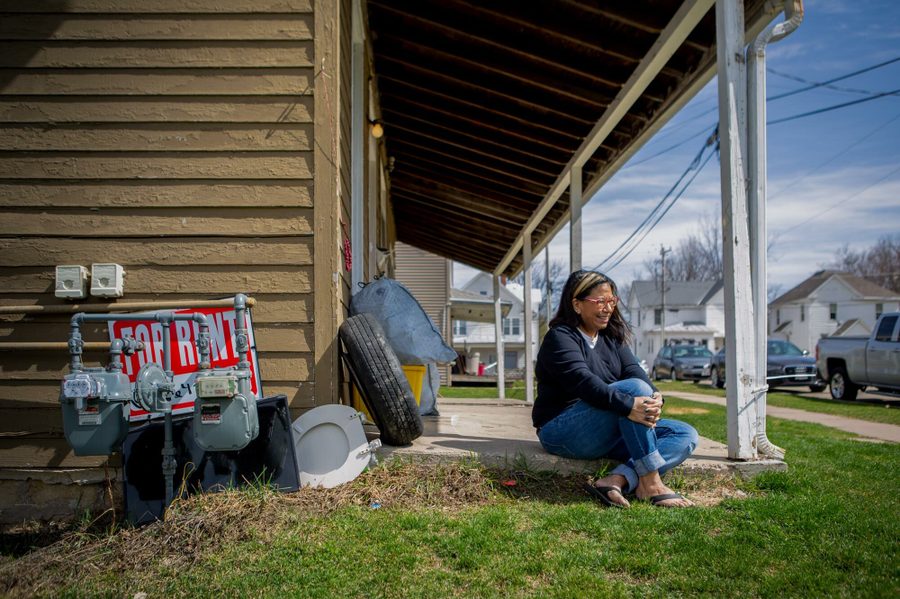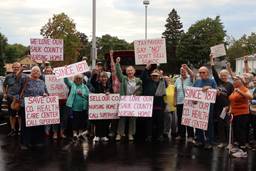"It's a Nightmare": Inside America's Rural Housing Crisis
Across Wisconsin, low-income people are struggling to find quality, affordable housing.
Jack Kelly

PLATTEVILLE, WIS. — Kim Slater has been living at work lately. Literally.
On the morning of Friday, March 26, she spoke to In These Times from a room in the hotel where she spends most of her days behind the front desk. When Slater signed her current lease in early summer 2020, she never imagined she would find herself seeking refuge in a hotel — but like many others in rural Wisconsin, she discovered that good, affordable housing isn’t easy to come by.
Statewide, Wisconsin lacks nearly 120,000 affordable and available rental homes for low-income renters, according to 2019 data from the National Low Income Housing Coalition. The Covid-19 pandemic has only made things worse. Additionally, a commission on rural prosperity created by Gov. Tony Evers (D) found there is a “significant shortage of rural workforce housing” in parts of the state.
In 2015, Slater became the primary guardian of her two granddaughters, ages 14 and 11. Recently divorced, she decided to move to her hometown of Platteville, a small city 20 miles northeast of Dubuque, Iowa. “I thought, ‘If I’m going to [raise the girls] by myself, I want to do it in my hometown,’” Slater says. “I needed to be in my home.”
Finding a home has proven difficult since the family of three started renting in December 2019. After six months in a comfortable apartment, Slater’s lease expired, forcing her and her granddaughters to move May 31, 2020. With the U-Haul already packed, Slater discovered their landlord-to-be had extended his current tenant’s lease by a month, leaving them with nowhere to go and triggering the family’s first stint at the hotel where Slater works.
Eleven days later, Slater found a different, sizable three-bedroom unit renting for $650 a month. She signed the lease and moved in with the girls, but things quickly went wrong. Damage to the building left the unit without gas; the living room carpet was worn and stained with grease; eventually, the fridge stopped working. Despite numerous, urgent calls to her landlord, no repairs were made.
“If I don’t do it, it’s not going to get done,” Slater says, regarding property maintenance.
Without gas, the family turned to space heaters to keep warm. Frozen and burst pipes forced the family into the hotel for stretches of time in December and again in February, where they remained into April.
Slater’s stay in the hotel has been subsidized by the Southwestern Wisconsin Community Action Program (SWCAP), a nonprofit that provides financial assistance to low-income families in five Wisconsin counties.
Michelle Friedrich, who oversees the organization’s emergency housing program, says stories like Slater’s are commonplace in rural Wisconsin. When SWCAP ran its own Section 8 housing program, from 1983 to 2019, Friedrich says the waitlist to access federally supported rent vouchers was two years long.
Steven Deller, a professor at University of Wisconsin-Madison and expert on rural economies, says one factor contributing to Wisconsin’s rural housing crisis is the sharp decrease in construction of new affordable housing since the Great Recession. He says developers are focused instead on building luxury homes because they produce higher profits.
“The number of developers [building new homes] has really dropped like a rock, because they got crushed in the Great Recession and they haven’t come back,” Deller says. “The developers that are out there are working at building higher-end homes because they can make more money that way.”
Meanwhile, rent prices have been growing faster than wages. From 2007 to 2017 in Wisconsin, the median increase in rent was 21.7% while the median increase in income was only 17.3%, according to a report from University of Wisconsin-Madison regional planning professor Kurt Paulsen. “When housing costs are growing faster than incomes, fewer families can afford a home,” he writes.
Beyond affordability, Friedrich says the low quality of available housing is also a burden for low-income families in southwestern Wisconsin. According to Friedrich, SWCAP avoids placing families in need of housing with certain landlords because — similar to Slater’s experience — their properties are decrepit and they fail to do even basic maintenance.
Now, given the disrepair, Slater is effectively using the rented apartment as a storage unit for the family’s belongings. She says she and the girls “100%” will be living at the hotel until June 1, when SWCAP is going to help them get settled into a new home. And while Slater is committed to finding secure housing for her family, the constant moving and uncertainty surrounding their living situation have taken a toll.
“I just want all my clothes in one place,” Slater says of the constant back-and-forth between the hotel and the house. “I want my shoes in one place, I want my shit in one place, I just want everything in one place — it’s a nightmare.”
Jack Kelly reports on politics, health care, agriculture and more in Wisconsin and the Midwest. His work has been published by the Wisconsin Center for Investigative Journalism, the Wisconsin State Journal, United Press International and more than a dozen other outlets.






